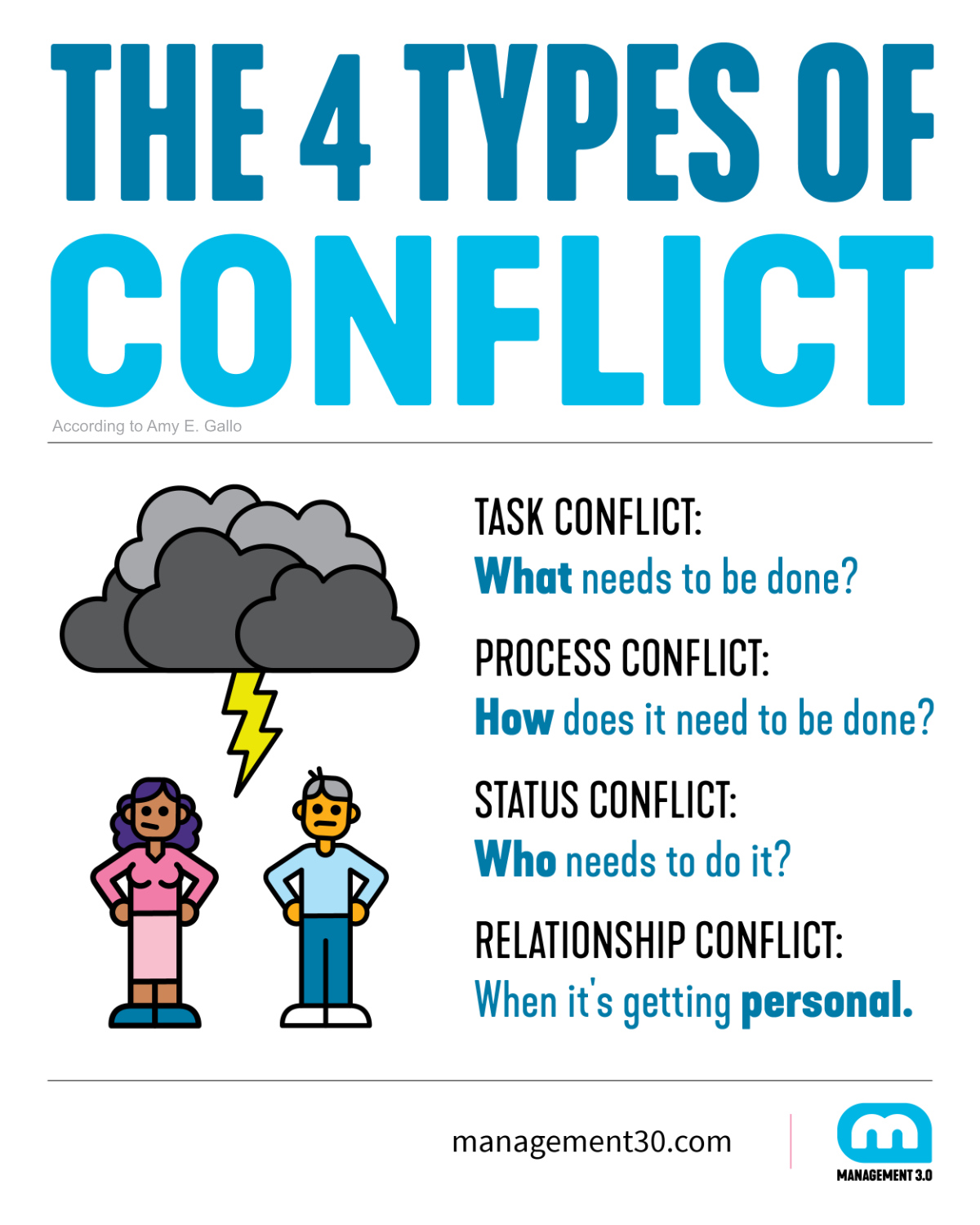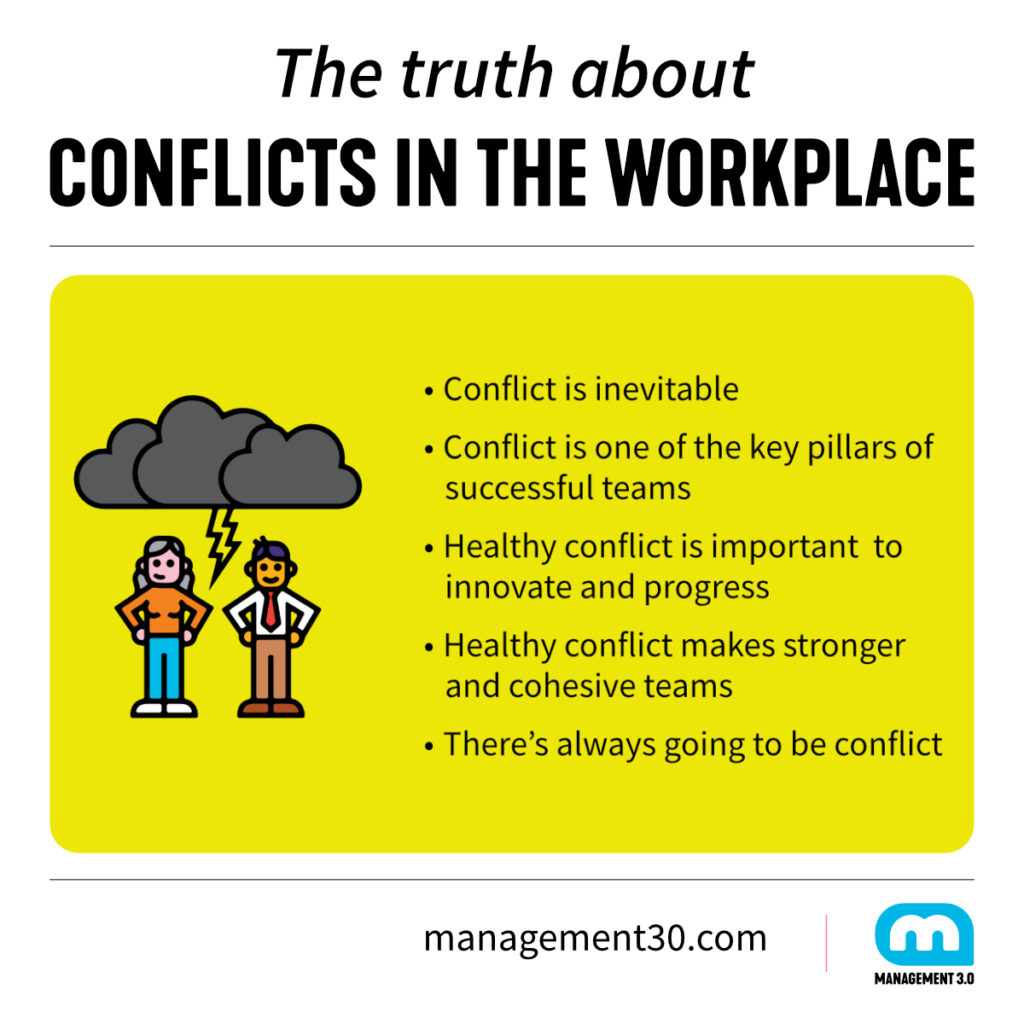This is an article about Conflict Management, written by an experienced Management 3.0 Facilitator, Sarika Kharbanda from India. She calls herself a global change hacker and lean change agent who explores how to nudge change forward by understanding and valuing different perspectives – a trait that comes in handy when it comes to conflicts in teams.
Workplace conflicts quick links:
- How conflicts in organizations look
- The importance of conflicts in an organization
- Conflict management strategies: Start with a workshop
- Continuous Key Practices for dealing with workplace conflict
- Key learnings for conflict management in an organization
It’s a 9! No. It’s a 6! Why don’t you see things the way I do?
Team member 1: “You do not have time for a discussion with us or understand what challenges we face on the ground to develop and release products!”
Team member 2: “You do not understand our issues. You have not even attempted to see how the business actually functions on our floor!”
Team member 1: “We cannot trust you. You always miss your deadlines, as you will this time.”
Team member 2: “Your behavior does not inspire trust either!”
“Welcome to workplace conflict, Sarika!”, I say to myself.
How conflicts in organizations look
That is my induction into one of the Critical Product portfolio teams I am being asked to lead.
I’m already observing aggressive body language, discomfort, uneasiness, strain and tension in the words, pitch and tone of voices in the team. It isn’t something I hoped to start my induction with at all.
Well, s**t happens!
Finding the right moment to intervene, I suggest we timeout the meeting. With everyone in the same office location today, I invite everyone to an evening coffee and dessert. This also gives me a chance to say hello to each person. The invitation is welcomed by all. We walk over to the well-set cafeteria serving awesome dessert options and coffee.
According to Amy E. Gallo, author of The HBR Guide to Dealing with Conflict, there are 4 types of conflict: Task, Process, Status, and Relationship Conflicts.
- Task Conflict – What needs to be done?
- Process Conflict – How does it need to be done?
- Status Conflict – Who needs to do it?
- Relationship Conflict – When it’s getting personal
The importance of conflicts in an organization
We grab coffee and desserts and walk over to the standing bar tables at one end of the cafeteria. After brief introductions, I bring up the conflict from the meeting.
There is a moment’s pause after which one of the team members says, “Finally we are talking about the elephant in the room! It’s high time we address this dysfunction. I’d also like to hear your independent view, Sarika, on how we could resolve this and move forward.”
Everyone has a short comment on this. But all are in alignment and recognize that we can no longer ignore this conflict. So, let’s confront it.
We agree to meet the next day for a workshop that I would facilitate.

Conflict management strategies
Few key things we do in the workshop the next day:
- Start by acknowledging that there is a conflict within the team
- Align on the purpose of the workshop
- Call out the obvious so that everyone in the room feels safe voicing their opinion. If otherwise, they need to inform the facilitator so we could receive and respect the anonymous feedback.
- Create an environment to openly talk about disagreements
- List what we agree on
- List what we do not agree on
- Through facilitated meaningful dialogue, we agree to disagree too
- New ideas and conversations emerge out of the various dialogues
- Brainstorm potential options, trade-offs, highlight implications
- Come up with prioritized actions / experiments to take forward to address the conflict
- Own up and commit to actions!
The workshop goes on for almost the whole working day with everyone making this their only priority. This was important because it was something everyone needed to address.
We use different canvases as conversation provokers during the workshop.
- The Team Agreement canvas – tweaked and customized for our context
- The Storytelling canvas – tweaked and customized for our context
Of course all of these canvases then start to get customized, for example, as the team finds that some additional fields might add more value.
We borrow some inputs from Patrick Lencioni’s Conflict Resolution model, too (Overcoming the 5 Dysfunctions of a Team) and add to the canvas, namely, the Environment, Individual and Informational obstacles.
It takes ‘Us’ less than 3 months to turn this ship around. No, we do not have a magic wand.
What we do have are people who want to try something different to make this work and give it their best shot.

Continuous Key Practices for dealing with workplace conflict
Daily check-ins: not just on the progress but also on the health of the overall team. We use a tweaked version of the Happiness Door too.
Weekly reflect-and-learn sessions: with a focused section for “how have we addressed conflict in this week?” This meant visiting the obstacles, actions, action owners, obstacles to implement the actions and how we enable the environment even more for issues to not occur in the future.
Management 3.0’s 360 Feedback Dinner approach tweaked specifically for feedback around conflict and during lunch instead of dinner.
Key learnings for conflict management in an organization
- It is crucial to acknowledge that there is conflict
- Conflict is inevitable
- We will all have different perspectives. We need to be okay with that. With more than one person in the room there will be more than one point of view. We need to have an open mind to study, question, accept or reject that point of view.
- Conflict is one of the key pillars of successful teams
- Healthy conflict is important for us to innovate and progress
- Healthy conflict has made us stronger and cohesive as a team
- Through trusting each other, everyone knew they could ask for help, experiment, take risks and apologize, if needed. If the worst came to pass, we knew we had each other’s backs too
- There’s always going to be conflict. It needs to be recognized and dealt with.
Today, we don’t fear conflict anymore.
We have experienced how healthy conflict leads to innovation. Good leaders nurture and encourage healthy conflict to create high performing teams.
Sarika has been interviewed to discuss Conflict Management in the Workplace: How Managers Can Handle Conflicts. In the Perspectives of Change Podcast, she shares insights from this article on conflict management. Watch | Listen
Photo by Yan Krukov from Pexels






